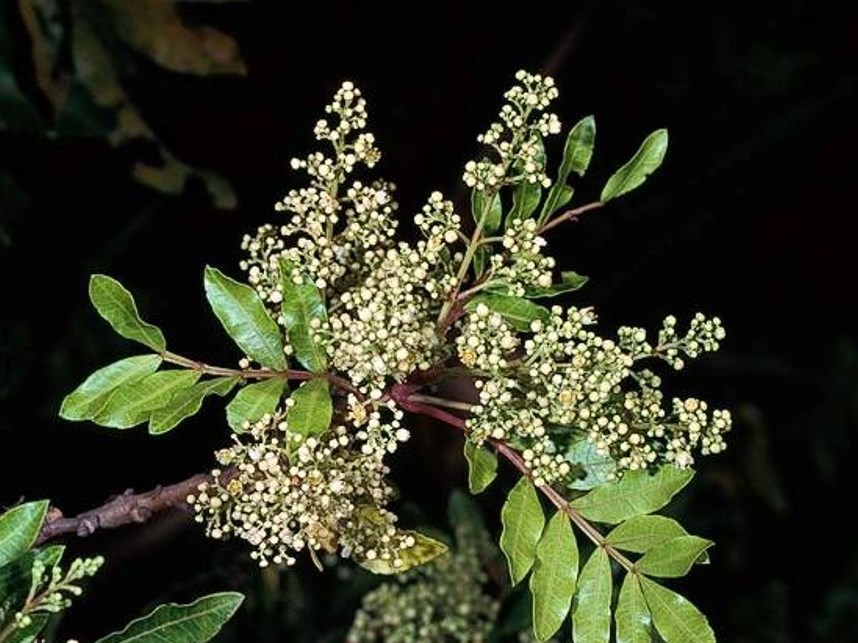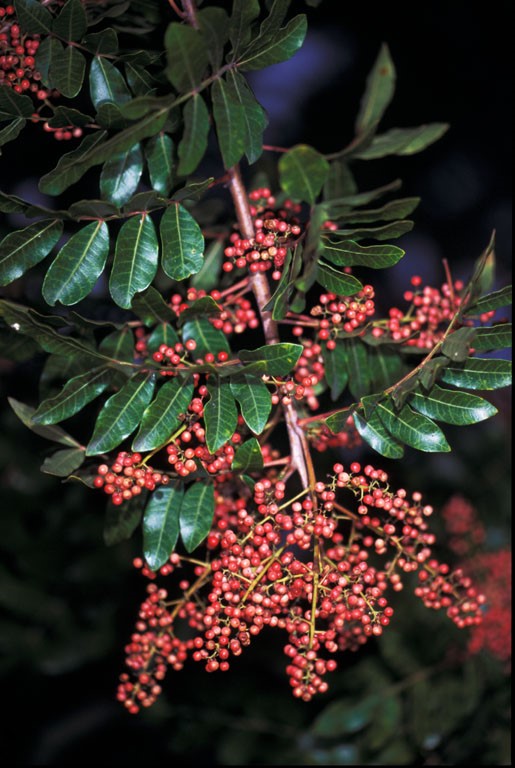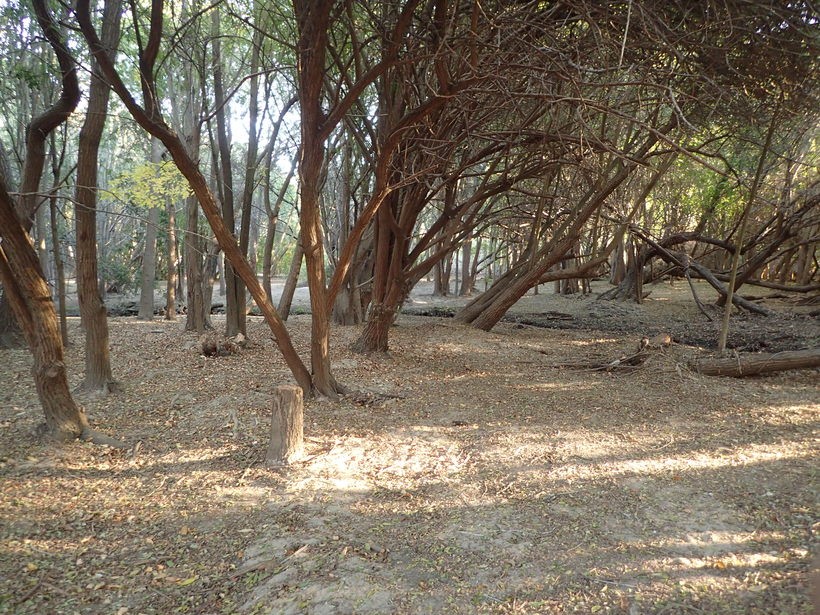Schinus terebinthifolia

Synonyms: Schinus mucronulata, Schinus antiarthriticus, Schinus terebinthifolius
Common names: Brazilian pepper tree; Christmas-berry tree; Christmasberry; Florida holly
Schinus terebinthifolia (Brazilian peppertree) is an evergreen shrub or tree found along portions of the southern coast of California. Brazilian peppertree prefers riparian areas, canyons, fields and roadsides where some water is available throughout the year. Its pink fruits are sold as peppercorns, but they may be toxic to humans and animals if too many are eaten. In California, Brazilian peppertree is not yet a very large problem, but it has been a very aggressive invader in tropical areas like Hawaii and Florida. In order to control peppertree infestations, tree roots must be removed or killed, and seedlings must be controlled by hand-pulling for at least three years.
Cal-IPC Rating: Moderate — Alert?CDFA Rating: None?
Assessment(s)
Schinus terebinthifolia Plant Assessment Form - Information gathered by Cal-IPC on the impacts, rate of spread, and distribution of invasive plants in California. Does not include management information.
Weed Management Notes
- Management Notes - Information on management techniques and effectiveness from the University of California Cooperative Extension’s Weed Research & Information Center.
Cal-IPC Newsletter Articles
- Wildland Weed News. editor. Vol 17, Issue 2
- Don’t sell a pest: A new partnership to prevent plant invasions through horticulture. Connick, Sarah; Gerel, Mike. Vol 13, Issue 2
- Which weeds dominate southern California urban riparian systems?. Burkhart, Brad; Kelly, Mike. Vol 13, Issue 1
- Exotic pest plants, Calif. Assoc. of Nurserymen, and CalEPPC. Bell, Carl E.; Evans, Mike; Wilen, Cheryl. Vol 09, Issue 1
- Education: Wildland weed tours and talks. Kelly, Mike. Vol 08, Issue 1
- Lessons from the front: Taking stock to avoid surprises. Kelly, Mike. Vol 05, Issue 1
- Wildlife and weeds: life in an alien landscape. Lovich, Jeff. Vol 03, Issue 3
- Slow-motion explosion: The exponential spread of exotic species. Schneider, David. Vol 02, Issue 3
Cal-IPC Symposium Presentations
Presentations are linked where available. Where a presentation is not available, find more information by reading the abstract in the Cal-IPC Symposia Archive.
- Big Canyon Habitat Restoration and Resiliency Project Phase 3: CEQA exempt through CDFW’s SERP process. Arenas, Alys (2023)
- The removal of invasive woodlands leads to shifts in arbuscular mycorrhizal fungi. Perez, Jennifer; Shah, Neil; Banuelas, David; Treseder, Kathleen (2021)
- Scaling up Brazilian peppertree (Schinus terebinthifolia) novel management techniques: lessons from South Florida. Enloe, Stephen; Bell, Mackenzie (2020)
- The role of public gardens as sentinels of plant invasion. Culley, Theresa; Dreisilker, Kurt; Ryan, Clair; Landel, Hans; Cavallin, Nadia; Arcate Schuler, Jessica; Shultz, Brittany; Gettig, Roger; Havens, Kayri (2020)
- Interactions between invasive Schinus molle (Peruvian pepper tree) with six plant species commonly found in southern California nature reserves. Banuelas, David (2019)
- Partnering to prevent invasions of plants of horticultural origin. Connick, Sarah; Gerel, Mike (2004)
Other Schinus terebinthifolia Information
- Bugwood - National database from the Center for Invasive Species and Ecosystem Health at the University of Georgia.
- CalPhotos - Images of plants taken mostly in California.
- Calflora - Distribution map and records of this species in California.
- CalWeedMapper - Distribution map of this species in California with ability to determine regional priorities.
- EDDMapS - Distribution of this species in North America.
- GBIF - Global distribution information.
- Jepson Interchange - Information on this plant's taxonomy, biology, and distribution from UC Berkeley's Jepson Herbarium.
- USDA PLANTS Database - Information on identification and distribution, with links to websites in individual states.


